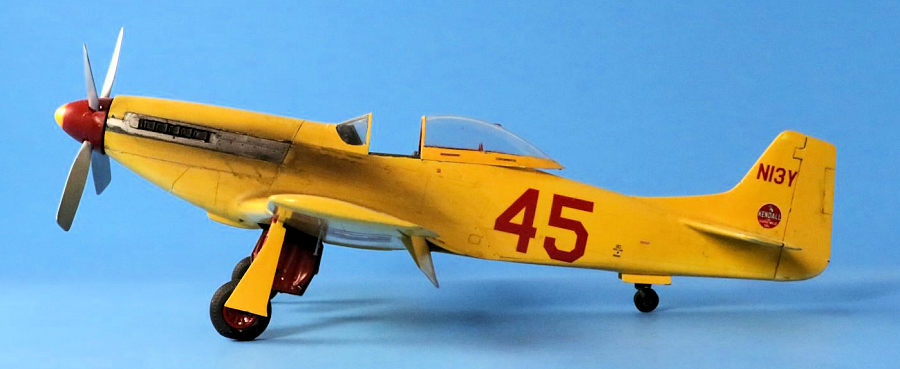
| KIT #: | |
| PRICE: | $55.00 |
| DECALS: | One option with Halberd conversion |
| REVIEWER: | Chuck Horner |
| NOTES: | Draw Decals. |

| HISTORY |
A Story of a Thoroughbred - N13Yankee
The Thompson Trophy race was part of the National Air Races, held each Labor Day weekend in Cleveland, Ohio. The Thompson race was a closed-course, unlimited air race sponsored by the Thompson Products, Inc. of Cleveland.
Prior to WWII, entrants to the unlimited race were all custom-built planes like the Granville’s Gee Bee racers of the early 30’s and others during that decade. After the war, starting in 1946, all of the entrants were surplus WWII fighters.
ANSON JOHNSON spent the war years in the Army Ferry Command, flying just about every aircraft in the air force inventory. After his discharge, he joined National Airlines, based in Miami, FL. In early 1947, he caught the air racing bug after flying Betty Hass’s P-39 in the Miami Air Race.
N13Y(ankee) BEGAN LIFE as a P-51D-20-NA (44-72400). It was sold surplus in October, 1945 to Woody Edmonson who entered it as No.42 in the 1946 Thompson only to finish in seventh place. He sold it to Johnson in July, 1947.
Johnson entered the 1947 race as No. 45, now with civil registry of N13Y. The only modification he did was to cut two feet off of each wing. Unfortunately, that was not his year and he dropped out of the race in the fifth lap. Broke, he had to barrow gas money to get home to Miami.
1948 THOMPON RACE
In preparing for the 1948 race, Johnson first studied his engine options. The stock P-51D engine was a Packard-Merlin V-1650-3 with a two-speed, two-stage supercharger. This was a high-altitude engine that put out 2,200 h.p., but only 1380 h.p. at sea level. He found a rare Packard-Merlin V-1650-225, a low-level engine with a single-stage supercharger, built for the Mosquito. This engine put out 1620 h.p. at sea level and was 240 pounds lighter. He also changed out the Hamilton Standard propeller for a paddle blade type.
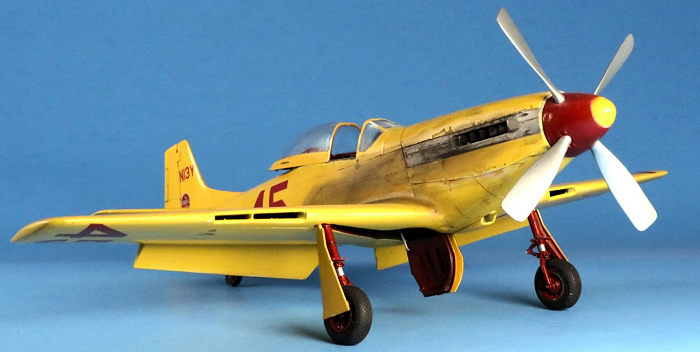 With these
changes, he headed off to the 1948 races. Ten aircraft were entered in the
Thompson that year, but only three were real competition – Chuck Brown’s Cobra
II, winner of the ‘46 race and Cook Cleland’s two massive Goodyear F2G Corsairs
with the P&W 4360 engines.
With these
changes, he headed off to the 1948 races. Ten aircraft were entered in the
Thompson that year, but only three were real competition – Chuck Brown’s Cobra
II, winner of the ‘46 race and Cook Cleland’s two massive Goodyear F2G Corsairs
with the P&W 4360 engines.
New to the race that year was Shell’s introduction of its methyl-triptane racing fuel. The problem was to use it, engines needed to be re-timed to prevent detonations. Anson got it right, others did not.
Early in the twenty-lap race, the Corsairs started sheading cowlings from engine detonations and dropped out. Johnson was now in solid second place behind Cobra II. Then on lap 19, Cobra II dropped out and Johnson won the race. Only three of the ten starters finished.
1949 THOMPSON RACE
In preparing for the ’49 race, Anson knew that it was more luck than skill that had won the ’48 race. He’d have to make major changes to the plane to compete.
Teaming up with National Airline’s V.P. of Engineering, J. D. Crane, they began to look for ways to reduce drag. The P-51’s prominent belly scoop was first on their agenda. After completely removing that structure, they put P-39 glycol radiators in the former gun bays of each wing. A single oil cooler was outboard of the radiator in the right wing. New air inlets in the wing’s leading edge brought air in. Unique exit duct designs were simply a section of the upper wing skin, cut out on three sides and small mechanical rods pushed the flexible skin up and open as needed. When fully installed, the engine, now with cooling ducts outside of the prop-wash, could only be run statically for about five minutes. Anson found if he ran water from a common garden hose into the ducts, he could ground-run indefinitely.
Next, they cut six inches off each propeller blade and finally added special, low-drag exhaust stacks to the engine.
The team next tackled the gear retraction. At that time, the race started with a mass, line-abreast take-off of all entrants. The P-51D did not have a practically quick gear retraction, which meant several seconds lost before the plane would reach full speed. They installed an additional accumulator in the system to retract the gear in three seconds. Fearing damage to the gear if used all the time, the added a cut-out circuit so that the gear would retract normally during non-racing flights. This proved the undoing of Anson’s race.
When the starting flag dropped and the mass take-off began, Anson was quickly airborne but it took three tries to get the gear retracted. Part of the procedure to connect the second retraction accumulator was to bleed the air from the system, something the mechanic forgot to do.
Having finally gotten N13Yankee’s gear up, Anson pushed the plane to its limit to catch up with the Corsair leaders, hitting over 450 mph. On the ninth lap, he began to hear bumps along the outside of the fuselage, then smoke began to enter the cockpit. Fearing fire, he quickly reduced power and pulled up out of the race and landed.
On inspection, the new exhaust stacks had starting to burn off and bounce along the fuselage. Smoke resulted and seeped into the cockpit.
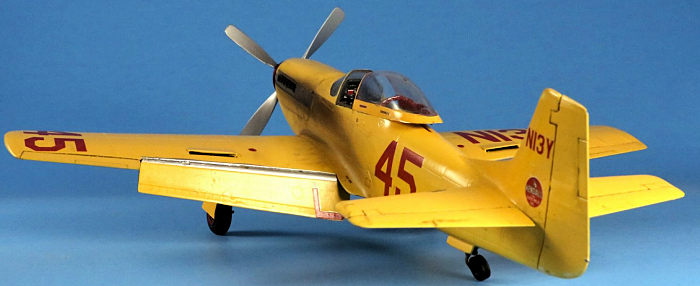 Unbeknownst
to the racers, during the second lap, Bill Odom’s “Beguine” had crashing into an
off-airport house, killing himself and a mother and son. After a review of the
accident, future air races were suspended, not to start up again until 1964 in
Reno. (Now moved again to Roswell, NM in 2025.)
Unbeknownst
to the racers, during the second lap, Bill Odom’s “Beguine” had crashing into an
off-airport house, killing himself and a mother and son. After a review of the
accident, future air races were suspended, not to start up again until 1964 in
Reno. (Now moved again to Roswell, NM in 2025.)
So here was Anson and N13Yankee, all dressed up and no where to go, except….
WORLD SPEED RECORD ATTEMPT
The world propeller speed record of 469 mph, set by Nazi Germany in 1939, still stood. In 1952 Anson set out to break it. The National Aeronautic Association would supervise and vouch for the record following strict procedures set up by the Federation Aeronautique Internationale. The attempt was to be made on June 6, 1952 at Key Biscayne, Florida.
On his first run, he entered the measured course at 200 feet and achieved 510 mph. His second run was 503 mph. But at that point his engine began to overheat and he stopped his attempts that day. To establish a new record, the average of the four best runs of any number of attempts during a thirty-minute period.
On the next day, he completed eight passes and felt assured of the record only to be informed later that the south camera had caught only three of the eight passes, making the record invalid.
Plans were made to try again in 1953, but first he needed to overhaul his tired -225 engine.
The final action that ended N13Yankee’s racing days came when the overhaul company lost his -225 engine, probably grouping it with a large order of Mustang Merlins from the Dominican Air Force. He was given a -9 replacement, but this was useless to him. Anson lost all interest in continuing. He put a few more hours on the plane but eventually sold it in 1959. Over the next decade, it went through a series of owners, but never flew again.
In 1972, it was purchased by Leonard Tanner and brought to Connecticut where he was building up his own P-51D. He wanted it for the near zero-time engine. At that time, the New England Air Museum became interested in the airframe for its historical value. Tanner had no use for the heavily modified parts and sold the remains to the museum in August, 1972.
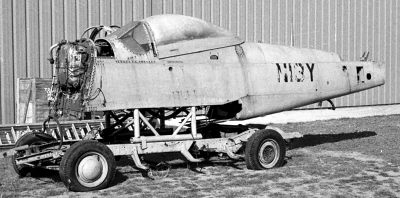 Another
decade goes by. N13Yankee is in museum storage. There is interest but no funds
to start a restoration. Then, seeming out of the blue, Anson Johnson appears on
the scene. He is nearing retirement as an airline captain and is looking for a
new project. He proposed to Museum Director, Philip C. O’Keefe, that he borrow
back N13Yankee, pay to have it restored to flying condition and make another
world speed record attempt (which at that time was still below 500 mph).
Another
decade goes by. N13Yankee is in museum storage. There is interest but no funds
to start a restoration. Then, seeming out of the blue, Anson Johnson appears on
the scene. He is nearing retirement as an airline captain and is looking for a
new project. He proposed to Museum Director, Philip C. O’Keefe, that he borrow
back N13Yankee, pay to have it restored to flying condition and make another
world speed record attempt (which at that time was still below 500 mph).
This was a real quandary for O’Keefe. The museum is a static aviation museum, tasked with preserving aviation history like the Smithsonian. Flying added the risk of destroying an historic artifact. But the proposal was extremely tempting.
O’Keefe put the word out to several prominent museums
to see what they thought. One of the responses was from Smithsonian Curator,
Robert C. Mikesh. His thought was that the original owner would take the
original article and complete the original mission which only added to the
historic 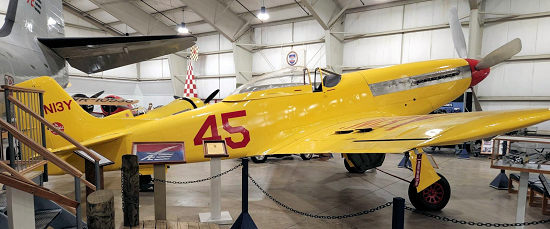 value.
The risk of losing the airplane was relatively small.
value.
The risk of losing the airplane was relatively small.
In October, 1982, Anson and the restoration company he had hired, came to the museum and picked up N13Yankee. I only had a short time to talk with Anson while he was there. I expected there would be many more times during this project, but it was not to be.
Shortly after this time, Anson went through a divorce, tying up his money. Before that could be settle, he was diagnosed with cancer. He died in 1988 before the project could get started.
N13Yankee came back to the New England Air Museum and remained in storage until the 2010’s when serious restoration began. The restored racer is now on display as it appeared in the 1949 Thompson race.
| THE KIT |
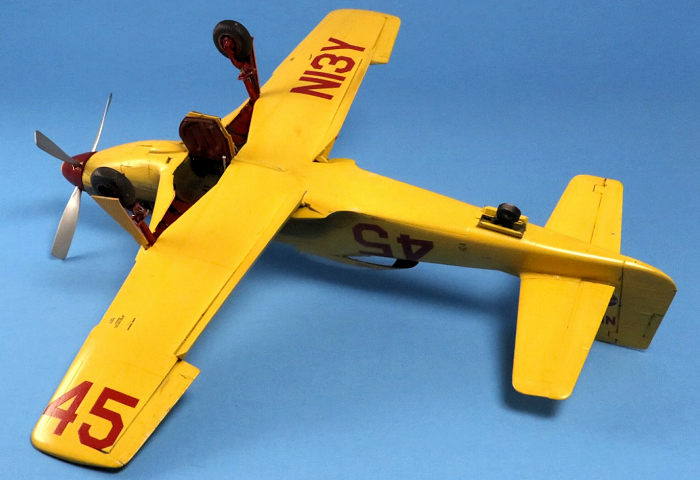 For a
somewhat obscure heavily modified P-51 racer, there are TWO 1/48 scale resin
modification kits on the market and one decal sheet.
For a
somewhat obscure heavily modified P-51 racer, there are TWO 1/48 scale resin
modification kits on the market and one decal sheet.
The first mod-kit is from Black Magik Resin and uses the Tamiya P-51D as a base. The kit consists of a number of resin pieces to replace parts or to be inserting into the model.
The second, the subject of this article and I believe a more resent kit, is from Halberd Model of Ukraine. This is designed for the Eduard P-51D-20 kits and consists of a complete fuselage, prop, upper wings, the lower nose panel with carburetors scoop, and decal markings for the 1949 race. There is also a separate decal sheet from Draw Decal with the complete 1949 race markings.
I purchased all of these plus the Eduard P-51D over-trees, the Eduard SpACE set of 3D instrument panel and Eduard resin P-51 wheels.
| CONSTRUCTION |
 The
conversion is quite simple. Halberd clearly marks out in their directions what
Eduard parts to leave off the what parts need modification. The only cuts needed
are on the Eduard lower wing part. This allows the Halberd resin upper wing
parts to be glued on to lower wing with all of the wing cooling duct mods
included. The fuselage halves are a direct replacement for the Eduard ones. The
cockpit, canopy, landing gear and lower wing are Eduard parts.
The
conversion is quite simple. Halberd clearly marks out in their directions what
Eduard parts to leave off the what parts need modification. The only cuts needed
are on the Eduard lower wing part. This allows the Halberd resin upper wing
parts to be glued on to lower wing with all of the wing cooling duct mods
included. The fuselage halves are a direct replacement for the Eduard ones. The
cockpit, canopy, landing gear and lower wing are Eduard parts.
Since all military equipment was removed from the plane, the armor plate behind the pilot’s seat (including head rest), the heavy military radios on the deck behind the seat (the rack remains) and all evidence of the guns need to be left off or removed. Halberd gives you the plugs for the shell chutes in the lower wing.
Just a bit of caution here. The Halberd parts are very thin resin. I put a spilt in the rear fuselage just from rough handling. Also, the pieces are pretty clean but some sanding was needed. Resin is a lot softer than styrene plastic and it’s very easy to sand too far.
| COLORS & MARKINGS |
The plane was yellow, but which yellow? The restoration appears to be a lemon yellow but the one original color photo I found looks a bit toward Chrome Yellow. I compromised by added a touch of red to the lemon-yellow paint.
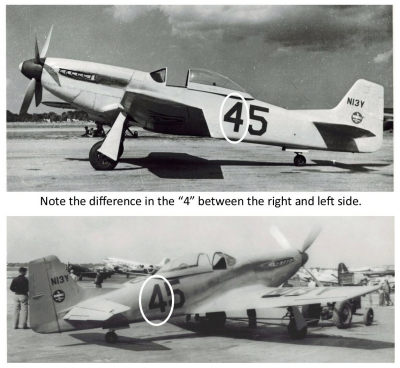 The
trim color is bright red which I matched to the decals, right or wrong. The red
trim was on the spinner and the inside of the canopy frames. The wheels were
also clearly red. The restoration has the gear struts silver and the inside of
the gear doors a zinc-green. The color photo I found late in the game clearly
shows not only the wheels red but the gear struts and inside of the doors as
well.
The
trim color is bright red which I matched to the decals, right or wrong. The red
trim was on the spinner and the inside of the canopy frames. The wheels were
also clearly red. The restoration has the gear struts silver and the inside of
the gear doors a zinc-green. The color photo I found late in the game clearly
shows not only the wheels red but the gear struts and inside of the doors as
well.
Draw Decals points out that the number font on the restoration is slightly different than what photos of the origin show. They give you both, but I matched the number styles in the old photos.
Another thing pointed out to me and confirmed from old photos, is the “4” in the fuselage “45” is not the same on both sides. On the left side, the “4” looks pretty normal, but on the right, the upper part of the number is elongated making the lower stem noticeably shorter. I showed this by simply cutting the lower stem on the right-side decal.
| CONCLUSIONS |
This is the second Halberd conversion I have done and a third one is waiting to be started. Both were relatively easy once I got used to working with the thin resin pieces. I purchased them directly from the Halberd web site and it took about three weeks from the Ukraine to the eastern U.S.
| REFERENCES |
The Saga of N13Y, Philip C. O’Keefe, Journal American
Aviation Historical Society, Winter 1974
(a copy of this article is on the Draw Decal web site, on the N13Y decal
description page.)
As Operations Director of New England Air Museum during that time, I had many conversations with Executive Director, Phil O’Keefe and other historians about N13Yankee, not to mention meeting Anson Johnson in 1982.
Chuck Horner
23 January 2025
Copyright ModelingMadness.com. All rights reserved. No reproduction in part or in whole without express permission.
If you would like your product reviewed fairly and fairly quickly, please contact the editor or see other details in the Note to Contributors.